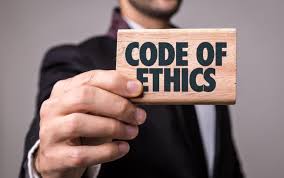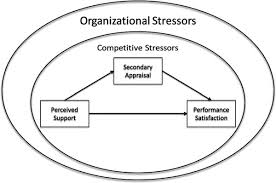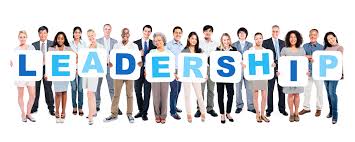
Role of Leadership in Shaping Organizational Culture
Order Instructions:
Recent research stated that “[c]ompanies with an established organizational culture that includes strong capabilities for change, commitment to innovation and a high level of trust have a significant advantage” when attempting to adopt a strategy of broad-based corporate sustainability (Eccles, Perkins, & Serafeim, 2013). Yet an Ethics Resource Center (2012) survey found that 42% of respondents felt their organizations exhibited signs of a weak ethics culture with a low degree of trust and transparency. Organizational leaders should have a strong incentive to identify and address any disparities that exist between their organization’s current culture and a productive healthy one. They must understand the impact they can have as leaders in facilitating an organizational culture, determining the necessary steps to build that culture, and taking the necessary action to create a healthy organizational culture.
To prepare:
•Reflect on all you have learned about leadership and leadership theory throughout this course. Begin searching for scholarly references about the relationship between leadership and organizational culture. Reflect on the leadership characteristics and skills that are useful in promoting a healthy organizational culture. Also, consider the leadership styles that promote a healthy organizational culture. Think about the impact on organizational culture of how a leader responds to specific situations, such as crises. Reflect on how a leader might use power to promote a healthy organizational culture and how a leader can promote ethics in a healthy organization.
The “To prepare” is intended to aid in your reflection upon how the various leadership theories and other topics throughout the course relate to organizational culture. However, you are free to analyze other facets of the relationship between leadership and organizational culture.
By Day 7 of Week 7, submit an 8-page comprehensive scholarly analysis of the role leadership plays in shaping an organizational culture.
Your paper must contain ten scholarly resources. These can be a combination of the Learning Resources used throughout this course and new scholarly resources. Your paper should adhere to the APA Course Paper Template found in the Walden University Online Writing Center. The link is located in this Module’s Learning Resources.
SAMPLE ANSWER
Role of Leadership in Shaping Organizational Culture
Introduction
A very important role of an organization’s leadership team is to create and maintain an appropriate organizational culture. This process can take place at any organizational level, and variations in different departments are quite common in larger organizations. As much as this is necessary for the business to meet its demands, it is also important for the company to possess an overriding culture that has the capability of permeating and functioning in its various departments. Leaders are the main contributors towards the shaping of an organization culture. They have various roles, all of which contribute to the resulting culture. Organizational culture is a term used to describe the beliefs and values that have been in existence within an organization for a longer period. It also refers to the staff beliefs as well as foreseen values of their work, which influence their behavior and attitudes towards work. Leadership teams usually work toward adjusting their leadership behavior so as to accomplish the organization’s mission, a step that may end up influencing employees’ level of job satisfaction. Therefore, it is essential to clearly understand the relationship between leadership, organizational culture, and employee job satisfaction. This paper analyses the various roles of leadership in the shaping of organizational culture by looking at the arguments presented by different scholars at different times.
The Role of Leadership in Shaping Organizational Culture
The role leadership plays in shaping an organizational culture involves many activities. First, they shape the culture by how they react to critical issues. Organizational culture affects the performance of a business either negatively or positively. This depends on whether or not the culture is constructive or destructive. Stanislavov and Ivanov (2014) argue that leaders can shape organizational culture by changing to a more effective leadership orientation. The leadership style used within organizations shapes the culture as it determines how the employees will be reacting in the working environment. According to the study conducted, three casinos were used to identify the relationship between leadership style and the organizational culture adopted. In casino A, the previous manager showcased a predominantly commanding style. This type of leadership focuses on giving commands to employees without giving them room for having a say in the situation. As a result of this, the organizational culture was focused on control and competitiveness (Stanislavov & Ivanov, 2014). When such a leadership style is used, the working climate may be affected negatively since the engagement of employees is prohibited. Therefore, instead of employees feeling like they belong, they end up feeling as if they are being misused for the benefits of others. With such a leadership style, employees cannot effectively work in teams because each one of them is busy competing so as to get on the good side of their leader.
When another manager was employed, the situation changed drastically. The leader displayed an affiliate style, which gave room and enhanced collaboration. This resulted to an organizational culture that featured a ‘political system’ (Stanislavov & Ivanov, 2014). This type of culture was shaped because the employees were free to air their thoughts and arguments on certain topics. This triggered a positive climate that made the employees feel free and appreciated. Unfortunately, the employees also recorded a decrease in how they competed on tasks since the leadership was not as strict as before.
Hu, Dinev, Hart, and Cooke (2012) suggest that a one on one correspondence is present when aligning top management behaviors with organizational culture characteristics such as power sharing behavior and culture, participative behavior and decision making culture, transformative vision, and risk tolerance culture. They further argue that the management has a role of shaping organization culture by drafting policies that are acceptable to employees and using education to reinforce the policies and frame organizational culture (Hu, Dinev, Hart & Cooke, 2012). The paper studies an information security organization whose employees were not being strict on information confidence. Therefore, the only way to ensure that no such problems were experienced in the future, a new organizational culture, which would focus on two components, had to be created. The first was to create a shared assumption about information security, and the second featured the education of the employees about these assumptions.
The role of the management in shaping an organizational culture in this case is displayed by the fact that leaders are responsible for the implementation of the above mentioned components. The creation of policies to guide employees in their daily tasks is the duty of the leader. The policies created need to be designed in such a way that when employees follow them, they will behave just as they are expected to. The education of employees on the various policies is important as it shows them the importance of sticking to the policies. Therefore, instead of forcing them to follow the policies, the leader will be showing them the benefits of doing so. When employees realize these benefits, the result will be that they will end up sticking to the policies without being followed. Their beliefs and attitudes will be changed, and so will the organizational culture.
According to Lightle, Baker, and Castellano (2009), the leadership team of an organization are responsible for shaping the organizational culture by overseeing the organizational ethical values. In their journal, a case study of Washington Mutual has been used to describe cases where organization leaders are not playing their role of ensuring that their ethical values are upheld. Some of the unethical activities, which result to an unethical organizational culture, are frequently hidden from the leaders until when it is too late. However, this is not an excuse for the leaders to claim their purity. Lightle, Baker, and Castellano (2009) argue that leaders need to establish codes of conduct, create ethical guidelines, and make use of monitoring programs that will help prevent fraudulent acts or at least establish an organizational culture that punishes those who break the rules. Similarly, they state that the organization culture created should also encourage and reward integrity and responsibility.
When codes of conduct are established by a leader, the employees will get to believe that the ways stated are how they are supposed to act in the workplace. Ethical guidelines will show them what is acceptable and what is punishable. Since employees are always keen on keeping their jobs and avoiding punishments, the result will be that a majority will focus on doing what is acceptable and avoiding what is punishable. All these actions will result to the creation of an organizational culture, which the leader was hoping for as he or she was creating these guidelines. When the leader monitors the activities of employees, it will be easier to spot an area that causes concern, and which needs immediate attention. This is also part of an organizational culture once employees and leaders become accustomed to the rule of monitoring.
Latham (2013) stated that leaders have a role of shaping the organizational culture through their leadership behavior. Although setting the example is a common axiom of leadership, it is even more important when leading transformation that the leaders become the change they want to witness in their organization. This means that the leadership behavior needs to be consistent with the organizational vision and desired culture. Therefore, if the leader needs to create an organizational culture that focuses on respect for each other, he must first treat others with the same level of respect he expects them to use. If this leader shows that he does not tolerate any screaming and yelling, as he himself does not use that for communication, the employees will find it easier to follow his footsteps (Latham, 2013). The same goes for the ethical organizational culture whereby the leader must first show no tolerance for unethical behavior in the organization.
Symbolic managers spend most of their time thinking of the organizational values, and how they can transform the culture into an even stronger subject. These managers view their primary job as that of managing conflicts arising value, which result from the flow of daily events. Kane-Urrabazo (2006) believes that managers have a role in the development of a healthy organizational culture by displaying exemplification of trustworthiness and trust, empowerment and delegation, and also consistency and mentorship. These components decide how employees behave within the organization, and how they carry out their tasks. When employees know how they are expected to behave, they will behave in that way. However, if no guidelines are offered, each one will showcase behavior that they believe to be acceptable. In this case, when the employee is given a specific task, they will act accordingly to complete the task. However, when no task delegation takes place, employees may have trouble completing a task since some areas may be left untouched. Therefore, the leader has the role of shaping an organized organizational culture by ensuring that each individual is aware of his or her specific tasks.
George, Sleeth, and Siders (1999) state that leadership literature has emphasized the role of leaders in articulating a vision, and in establishing an organizational culture through setting objectives and then clearing any hurdles by smoothing out the path for attaining the objectives. They further argue that the leaders need to employ behaviors will create, communicate, and manage the organizational culture (George, Sleeth, & Siders, 1999). Thus, the mode through which leaders establish and communicate a set of shared values and beliefs of the organization to employees is very important. These authors believe that leaders play their role of shaping the organizational culture by articulating the vision. This implies that culture can be created when the leader clearly and effectively expresses his vision ideas to the employees.
The reason why creation of organizational culture commonly fails is because the leaders fail to articulate their vision. For this to be successful, employees need to have an understanding of the benefits associated with the vision, why that and not any other, and so on. By setting objectives and clearing hurdles, the leader is giving the employees a target to work towards. Then to ensure that they are successful, the process is monitored for factors, which may result to its failure. These hurdles may, therefore, include unethical behavior, unsatisfied employees, lack of employee engagement and so on.
The management shapes an organizational culture by understanding employee related variables such as organizational commitment, job satisfaction, and performance (Yafang, 2011). When these variables are clearly understood, the management can easily visualize a culture that will not affect these negatively. Instead, the articulated vision in this case will be formed on a basis that encourages the employees’ commitment to the organization, their job satisfaction, and improved performance. The leader will therefore shape the culture by encouraging activities that will make the employees feel satisfied as members of the organization. This may include treating them with respect, creation of compensation plans that will meet their needs, giving them room to take part in decision making and so on. Once they feel satisfied with their jobs, they will become committed to the organization, a step that will increase performance.
Heidrich and Alt (2009) also believe that the role of the leader influences the creation and change in the organizational culture. According to these authors, this is achieved when the leader defines behavioral norms and decision making methods, as well as when the leader makes decisions that eventually affects the organization’s value system. There are many ways through which a leader can have an impact on upon shaping the organizational culture (Heidrich & Alt, 2009). First, by being a role model; second, by making use of a reward system; third, through the selection and recruitment process; fourth, by using structure and strategy; and fifth, by considering the physical setting. Therefore, as the leader plays the role of shaping organizational culture, there are steps that must be taken. For instance, the leader needs to employ strategy, otherwise, the visualized culture will not be achieved. This is because a new mission cannot be completed with the use of old organization values and beliefs.
According to Veiseh, Mohammadi, Pirzadian and Sharafi (2014), organizational culture is shaped by the leadership role of transforming employees. This is because transformational leadership has been linked to how leaders encourage employees to perform better as well as to prepare reliable paths for new organizations. This is because this type of leadership is formed on a basis of four aspects: One, purposeful influence; two, intellectual encouragement; three, inspirational motivation; four, encouraging supports. By indulging in the above, the leader is influencing the organizational culture since the beliefs and values are also altered in the process.
Nguyen Huu, Yunshi, Ping-Fu, and Sheng-Hung (2014) also agree that transformational leadership shapes organizational culture. This is because such leaders are able to positively influence the followers to share their values and beliefs by promoting a higher level of intrinsic value associated with the accomplishment of a goal, emphasizing the important link between follower’s effort and goal achievement, and also by creating a very high level of commitment on both the part of the leader and follower towards a common organizational vision, mission, and goals.
Conclusion
Leaders are the main individuals within an organization who can actively shape the organizational culture. The works of the scholars analyzed in this paper prove that leaders shape the culture through their behaviors, actions, and their chosen leadership styles. Leadership behavior will affect whether or not the visualized organizational culture is achieved since employees are usually keen on how the leader conducts him/herself. The actions need to go hand in hand with the words and expectations of the leader; otherwise, the formation of a culture will not be effective. Lastly, leadership styles also play a role as they define the organization’s climate, which directly impact employees.
References
George, G., Sleeth, R. G., & Siders, M. A. (1999). Organizing Culture: Leader Roles, Behaviors, And Reinforcement Mechanisms. Journal Of Business & Psychology, 13(4), 545-560.
Heidrich, B., & Alt, M. (2009). Godfather Management? The Role of Leaders in Changing Organizational Culture in Transition Economies: A Hungarian-Romanian Comparison. Management (18544223), 4(4), 309-327.
Hu, Q., Dinev, T., Hart, P., & Cooke, D. (2012). Managing Employee Compliance with Information Security Policies: The Critical Role of Top Management and Organizational Culture* Managing Employee Compliance with Information Security Policies: The Critical Role of Top Management and Organizational.. Decision Sciences, 43(4), 615-660. https://www.doi:10.1111/j.1540-5915.2012.00361.x
Kane-Urrabazo, C. (2006). Management’s role in shaping organizational culture. Journal Of Nursing Management, 14(3), 188 194. https://www.doi:10.1111/j.1365-2934.2006.00590.x
Latham, J. R. (2013). A Framework for Leading the Transformation to Performance Excellence Part II: CEO Perspectives on Leadership Behaviors, Individual Leader Characteristics, and Organizational Culture. Quality Management Journal, 20(3), 19-40.
Lightle, S. S., Baker, B., & Castellano, J. F. (2009). The Role of Boards of Directors in Shaping Organizational Culture. CPA Journal, 79(11), 68-72.
Nguyen Huu, D., Yunshi, L., Ping-Fu, H., & Sheng-Hung, Y. (2014). An Empirical Study Of The Organizational Culture, Leadership And Firm Performance In A Vietnam Family Business. International Journal Of Organizational Innovation, 6(4), 109-121.
Stanislavov, I., & Ivanov, S. (2014). The role of leadership for shaping organizational culture and building employee engagement in the Bulgarian gaming industry. Tourism (13327461), 62(1), 19-40.
Veiseh, S., Mohammadi, E., Pirzadian, M., & Sharafi, V. (2014). The Relation between Transformational Leadership and Organizational Culture (Case study: Medical school of Ilam). Journal Of Business Studies Quarterly, 5(3), 113-124.
Yafang, T. (2011). Relationship between Organizational Culture, Leadership Behavior and Job Satisfaction. BMC Health Services Research, 11(1), 98-106. https://www.doi:10.1186/1472-6963-11-98
We can write this or a similar paper for you! Simply fill the order form!












